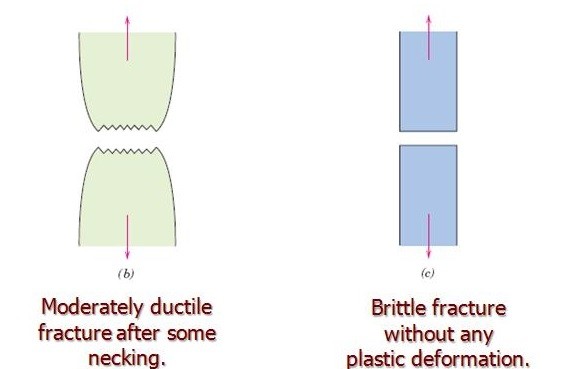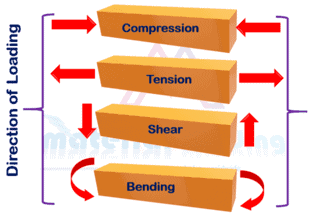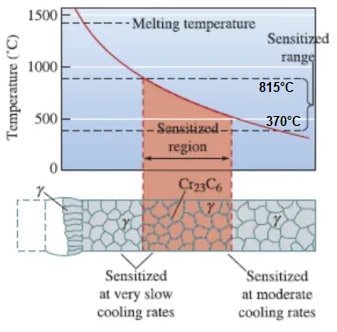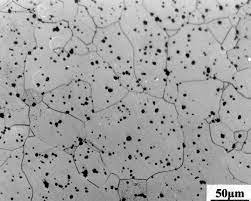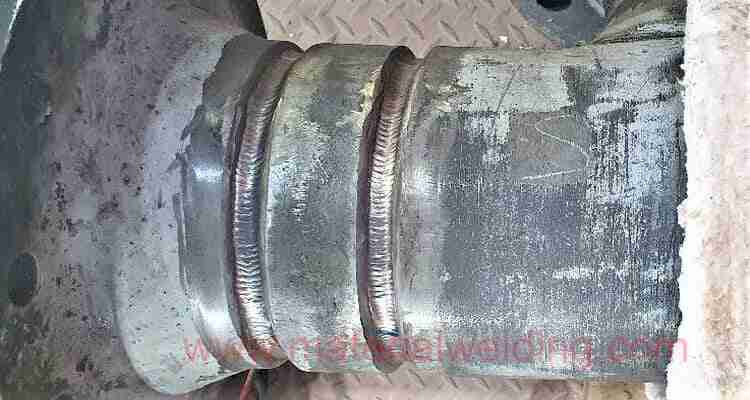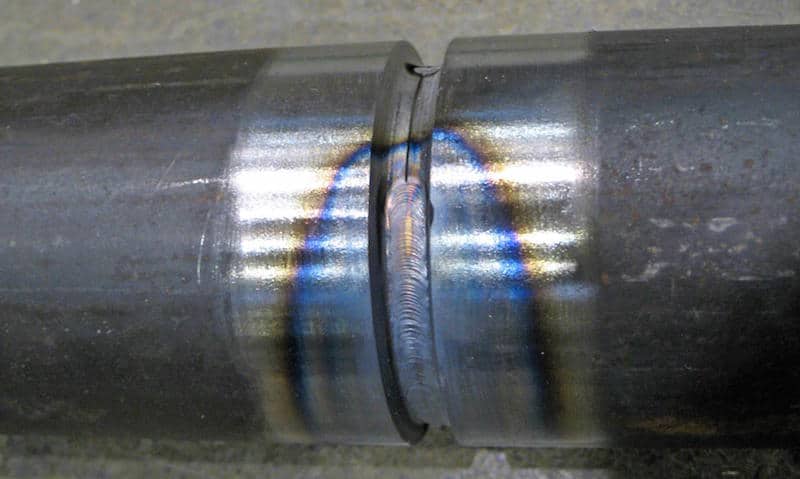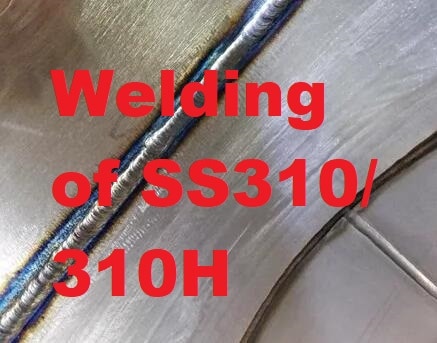What is Creep?
Creep is a type of deformation that occurs in materials subjected to a constant load over time. The deformation is permanent and results in a change in the shape of the material. Creep is most commonly observed in metals, alloys, and polymers.
It occurs when the molecules within the material are forced to move past one another. This movement can cause the material to deform over time, even if the load is removed. Creep can lead to a decrease in strength and stiffness of the material and may cause it to fail prematurely.

At the room temperature test, the elastic behavior of the material is of little practical significance.
But at elevated temperature, the strength becomes very much dependent on both strain rate and the time of exposure. Under these conditions, a number of metals behave like viscoelastic materials in many respects.
Creep Testing
A metal subjected to a constant tensile load at an elevated temperature creeps and undergoes a time-dependent increase in length.
The creep test measures the dimensional changes that occur at elevated temperature exposure, while the stress rupture test measures the effect of temperature on long-time, load-bearing properties.
Creep testing is a process of measuring the deformation of a material over time when it is subjected to a constant load or constant temperature. Creep testing can be used to measure the durability of a material, determine the stress-strain curve, and identify potential failure modes. Creep testing is typically performed on metals, alloys, and polymers.
The most common type of creep test is the constant load test. In this test, a sample is placed between two platens and loaded with constant stress & temperature on a Tensile Testing Machine.
In this test, the specimen is placed in a thermostatically controlled furnace and heated to a fixed temperature. The temperature is controlled by a thermocouple attached to the gauge length of the specimen. The deformation of the sample is then measured over time. The rate of deformation can be used to calculate the creep strain rate.
How Creep Test is Performed?
The first step is to select a suitable test specimen. The specimen should be small enough to deform significantly under the applied load, but large enough to measure accurately. The specimen should also be made from the same material as the component being tested.
The next step is to set up the apparatus for testing. The test specimen is subjected to prolonged constant load under a constant temperature on a Tensile Testing machine. The material deformation is plotted on a creep vs time diagram, which allows for the determination of the material’s creep properties. The specimen is usually made from metal alloys, plastics, or composites.
Creep Curve
The time-dependent deformation of material at constant stress is called creep. The simplest type of creep is a viscous flow.
To find out the engineering creep curve for a material, a tensile test specimen is subjected to a constant load at a constant temperature, and the stress in the specimen is noted as a function of time. The elapsed time of such tests may extend to several months.
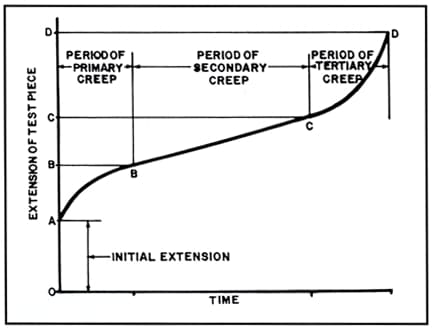
Curve A-D is the idealized type of creep curve. The slope of the curve in the secondary creep is called creep rate E.
When there is an initial instantaneous extension (strain E), the rate of creep falls with time, After that, the creep rate gradually climbs until it reaches a peak, after which the rate steadily increases until the test specimen fractures.
The degree to which the three stages [i.e. primary, secondary and tertiary as shown in the above figure are readily distinguishable depends upon the magnitude of the applied stress and the temperature of the test.
In an engineering creep test, the load is maintained constant throughout the tests, so when the specimen elongates, the cross-sectional area decreases, and the axial stress increases.
There are methods of compensating for the change in dimensions of the specimen, so as to carry out the creep test under constant stress. When constant stress creep tests are made, there is no region of accelerated creep rate (i.e. tertiary creep, stage III) and a creep curve similar to curve B is obtained. This curve represents the basic creep curve of metal.
The first component, stage I, transient creep a decreasing creep rate with time. Next is the constant creep rate, i.e. viscous creep.
Creep Stages
The first stage of creep, known as primary creep, highlights a region of reducing creep rate, and the creep resistance of the material increases by virtue of its own deformation.
For low temperatures and stresses, the creep of lead at room temperature and primary creep is the predominant creep process. The second stage of creep, known as secondary creep, is a period of nearly constant creep rate, resulting from a balance between the processes of strain hardening (due to increased strain) and recovery (due to thermal softening) referred to as a steady state creep.
The tertiary creep is the result of structural changes occurring in the metal such as void formation and extensive crack formation.
